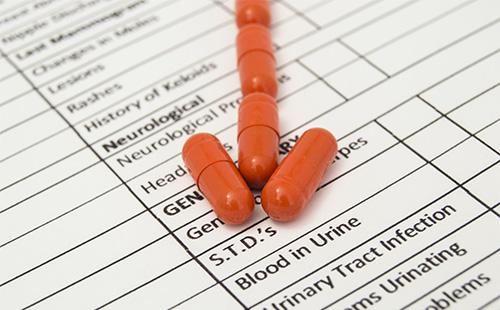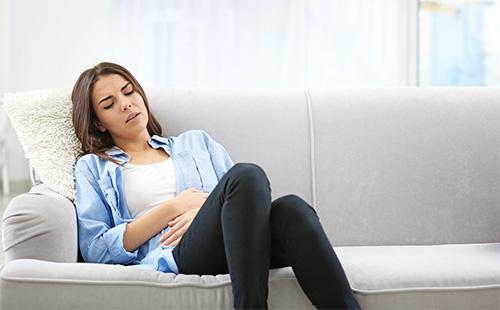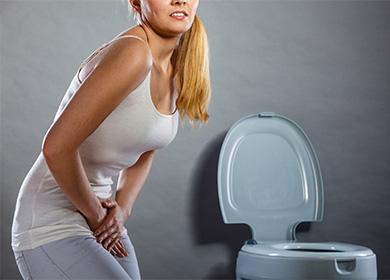The content of the article
The development of cystitis is facilitated by the anatomical features of the structure of the urinary system in women. In the female body, the urethral canal is shorter than in the male. In addition, the urethral opening is closer to the anus, which favors the entry of microorganisms into the urinary system.
The reasons
In most cases, this pathology is due to the growth and reproduction of pathogenic microflora on the wall of the bladder. The most common pathogens in women are caused by the following pathogens:
- gram-negative enterobacteria;
- viruses
- yeast-like fungi, in particular of the genus Candida;
- protozoa;
- sexually transmitted infections.
Despite the variety of microorganisms that can cause cystitis, in most women, the disease is provoked precisely by bacteria that live in the intestines:
- Escherichia coli;
- Enterococci.
Predisposing factors
The presence of an infectious pathogen is not enough for the development of cystitis. Normally, the immune defense of the bladder mucosa is provided by a number of antibacterial mechanisms. The most important of them is regular urination and ensuring a normal outflow of urine, which prevents its stagnation.
Even with infection, this mechanism prevents the adhesion (attachment) of bacteria to the mucous membrane of the bladder. In addition, local immune protection of the urinary tract mucosa is due to the presence of a number of immunoglobulins, in particular, Ig A, as well as non-specific and specific bacterial growth blockers on their wall.
That is why any condition that leads to a weakening of general or local immunity can provoke the appearance of cystitis. The provoking factors of cystitis can be:
- foci of chronic infection in the body (tonsillitis, caries);
- acute respiratory infections, flu;
- prolonged hypothermia;
- poor nutrition, hypovitaminosis;
- gastrointestinal diseases, accompanied by intestinal dysbiosis;
- metabolic diseases (diabetes mellitus, thyroid dysfunction);
- chronic stress;
- physical overload.
What else to consider
In some women, congenital anatomical features of the structure of the urinary system may become predisposing to the occurrence of cystitis. These include:
- the urethra is too short;
- narrowing of its lumen;
- bladder abnormalities.
In addition, there are additional causes of cystitis in women:
- the use of aggressive hygiene products;
- the use of a large amount of soap;
- frequent sexual intercourse;
- wearing tight underwear;
- the use of spermicides.
How does it manifest
The main signs of cystitis in women are as follows:
- burning or itching after urination;
- pain over the pubis, most often after going to the toilet;
- frequent urination;
- discharge from the urethra with cystitis in women, especially purulent or with blood;
- a slight increase in body temperature (up to 37.5 ° C).
What types of cystitis in women are
Depending on the nature of the course, cystitis can be:
- sharp
- chronic.
In the latter case, pathological changes extend much deeper than the mucous layer of the bladder.
In acute cystitis, the symptomatology is more pronounced, in some cases it can disrupt the patient's ability to work. Chronic forms of the disease often have an erased clinical picture, unpleasant symptoms can bother a woman only at the stage of exacerbation of the disease.
By the nature of the course, chronic cystitis can be:
- latent, with rare exacerbations - when inflammatory changes are detected only with endoscopic examination;
- latent with frequent exacerbations - more than twice a year;
- persistent - with constantly present changes in urinalysis;
- interstitial - with impregnation of the submucosal layer with leukocytes and impaired bladder function.
Depending on the prevalence and localization of the inflammatory process on the walls of the bladder, cystitis can be cervical, local or diffuse.
How is pathology diagnosed?
Diagnostic search for cystitis includes the following steps:
- history taking and examination of the patient;
- laboratory tests
- instrumental techniques;
- endoscopic examination;
- differential diagnosis.
Patient history and examination
During the consultation, the urologist or therapist will inquire in detail about the duration and nature of the symptoms, try to find out the causes of the disease. Objectively, you can detect hyperemia and swelling in the area of the urethral opening, pain during palpation of the abdomen in the suprapubic region.
What the laboratory will show
Laboratory diagnostics include, first of all, urinalysis. The following studies are usually prescribed:
- general urine analysis;
- bacteriological examination;
- determination of the sensitivity of bacteria to antibiotics.
With cystitis, bacteria (or yeast-like mushrooms), an increase in the number of leukocytes (leukocyturia) are found in the analysis of urine, and red blood cells are also sometimes detected. For quick diagnosis of urinary tract infections, you can use special test strips. They allow you to identify an increased number of white blood cells and nitrites.However, this method has a low sensitivity and does not replace laboratory tests.
Microbiological examination of urine consists in sowing urine sediment in a special nutrient medium. After the growth of bacteria, their identification is carried out, and also sensitivity to certain antibiotics is determined.
Instrumental methods for clarifying the diagnosis
To clarify the nature of cystitis, the following methods are used:
- ultrasound scanning;
- radiography using contrast agents;
- according to the testimony of CT or MRI.
Most often with cystitis, it is an ultrasound scan. It allows you to identify signs of an inflammatory process in the wall of the bladder, foreign inclusions (stones, sand), cystic or tumor changes.
Endoscopy
An endoscopic examination of the bladder (cystoscopy) is mainly used for chronic forms of the disease. Using this method, signs of inflammation of the walls of the bladder (redness, swelling) are detected. Cystoscopy also helps to identify tumors, areas of abnormal development of the mucosa. If necessary, the doctor can get a piece of tissue for histological examination (biopsy).

Differential diagnosis
Cystitis in women should be differentiated with other diseases of the urinary system:
- bladder neoplasms;
- neurogenic disorders of urination;
- urolithiasis;
- developmental abnormalities.
What helps
Treatment of cystitis in women includes adequate fluid intake, it is recommended to drink at least two liters of drinks per day. At home, it is best to use tea from herbs (St. John's wort, lingonberry leaves, chamomile), cranberry or cranberry juice. In acute cystitis, the use of a warm heating pad on the lower abdomen helps. This reduces the pain and frequency of urination and improves the patient's condition. As a thermal procedure, a bath or sauna can be used.
From folk remedies, a sedentary bath with chamomile is also recommended. To prepare it, you need to prepare a chamomile broth: boil a liter of water and add three to four tablespoons of dry grass there, leave for two hours. To prepare the bath, the broth is diluted with warm water. The duration of the procedure is about 20 minutes.
What medications should I take
The treatment regimen for cystitis in women consists of several main points:
- prescribing antibacterial agents;
- pathogenetic therapy;
- preventive measures.
In most cases, the presence of cystitis requires the appointment of antibacterial agents. The most effective in this case are antibiotics from the group of fluoroquinolones:
- "Ciprofloxacin";
- Levofloxacin;
- "Pefloxacin";
- "Lomefloxacin."
In acute cystitis, antibiotics are taken for three to five days. There are also single-dose tablets ("Monural"). If cystitis has complications in the form of an ascending infection involving the pyelocaliceal system of the kidneys, then antibiotic treatment can last up to ten days.

How to eliminate chronic inflammation
In chronic forms of the disease, the use of immunomodulators is indicated. In particular, the drug “Uro-Vaxom” containing the protein components of Escherichia coli is recommended. There are clinical recommendations for the use of Lavomax (tilorone).
Therapy of chronic cystitis in women, occurring with frequent relapses, sometimes requires a fairly long-term use of uroseptics. In some cases, they are taken in small doses in the evening for three to six months. Also in the treatment of chronic forms of the disease are used:
- drugs that improve reparative processes ("Solcoseryl»);
- stimulating venous outflow ("Eskuzan");
- antiplatelet agents (Trental);
- painkillers (Nimesil, Diclofenac,No-shpa»);
- antihistamines.
As a local treatment, physiotherapeutic procedures are used, as well as the direct administration of antibacterial agents into the bladder (Dioxidin, Silver Nitrate).
Preventative measures
The treatment of urinary tract infections requires the correction of certain habits and diets. Prevention of cystitis includes the following measures:
- diet with restriction of irritating foods (spicy foods, spices);
- regular visits to the toilet room;
- compliance with personal hygiene;
- hypothermia should be avoided;
- in the pool and on the beach always change wet swimsuit to dry;
- timely treat foci of chronic infection.
Cystitis in women is not a dangerous condition and in most cases lends itself well to drug therapy. However, it can acquire a chronic course, which is often observed against a background of weakened immunity or somatic pathologies. A simple prevention of cystitis in women, as well as high-quality treatment of acute forms of the disease, will help to avoid relapses.
